Cheese Care

HOW TO STORE CHEESE: CHEESE CARE AND STORAGE
HOW TO WRAP YOUR CHEESE
Keystone Farms Cheese uses a cryovac sealed bag for their package which gives their cheese a long shelf life. Once you open the package, do not peel the bag farther back than what you will need. This will help with the life of the cheese and reduce the possibility of molding on the side of the package. The package is designed to remain tight to the cheese. Once the packaged is opened try to remove one slice each week to retain freshness of product. Wrap the open end of the block tightly with wax paper or aluminum foil.
Once you've unwrapped a cheese stored in the refrigerator, the wrapping should be discarded and the cheese should be put in a new wrapping. Reused materials won't reseal properly.
HOW LONG YOUR CHEESE WILL LAST
Soft cheeses should be eaten more quickly than aged cheeses - a good general rule of thumb is that soft cheese should be eaten within 2 weeks of receipt. The more the cheese is aged the longer it lasts.
The firmer the cheese is, and the less moisture it has, the longer it will keep. You can keep aged cheeses for a REALLY long time... (6 months or more). They might develop surface mold on the cut surface, but they're still safe to eat - just trim that mold off!
HOW TO SERVE CHEESE
To best enjoy any cheese, eat it at room temperature. We like to keep it out for an hour or so before serving to allow the flavors to fully express themselves.
Soft cheeses take a shorter amount of time to come to room temperature than firm and hard cheeses. However, it is best to set out only the amount of cheese you will eat to prevent the cheese from becoming dry and tough from being repeatedly warmed and chilled.
HOW TO STORE CHEESE
Cheese should be refrigerated at temperatures of 35 to 40 degrees F in the original wrapping until ready to use. It is best stored in the refrigerator as close to the bottom of the appliance as possible - the vegetable compartment is ideal.
WHAT ABOUT MOLD? IS IT OKAY TO EAT MOLDY CHEESE?
Should any mold develop on the cut surface of the cheese, don't worry, and DON'T throw the cheese away. Mold may develop on the surface of cheese. Although most molds are harmless, to be safe, trim until the mold is removed. If the mold goes deeper - continue to trim around the mold spot until you've removed all the areas of mold. Use the remaining cheese as quickly as possible. To avoid cheese from getting moldy, try to use it within a couple of weeks after you have opened the product. You may even choose to shred the cheese once the mold is removed and put it into a zip lock bag and store in the freezer until needed for another recipe.
CAN I FREEZE CHEESE?
Fresh curds freeze well. If you are planning to keep them for a longer period of time, or if you order larger amounts, place small amounts in a freezer bag when freezing. Simply microwave them on defrost to enjoy warm curds and whips.
Shredded or grated cheese also freezes well.
Cheese blocks can be frozen, but we do not recommend it. A cheese block that has been frozen is best used as an ingredient. Most hard cheeses and processed cheeses can be frozen; however, there will be changes in their texture. Semi-soft cheeses will be more crumbly while softer cheese will separate slightly. The nutritional value will remain stable.
Tips for freezing cheese:
Freeze pieces of half-pound or less; Use moisture-proof and airtight wrapping; Freeze quickly and store at 0 degrees F for two to six months; Thaw in refrigerator so the cheese won't lose moisture, the slower cheese is thawed, the better; Use as soon as possible after thawing.
WHAT IS THE BEST WAY TO MELT CHEESE?
Cheese cut into small pieces or shredded promotes more even melting in a shorter amount of time. When you add cheese to any recipe, cook on low heat, stirring constantly. High heat will toughen cheese and make it stringy. When you are making a sauce with cheese in it, add cheese as the last ingredient and heat until just melted. Processed cheese melts more smoothly than natural cheese because of the amount of water added to the processed cheese.









